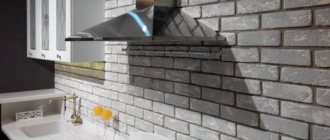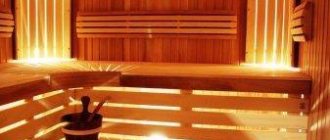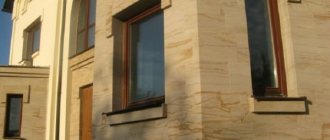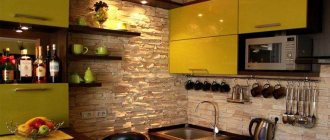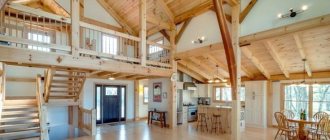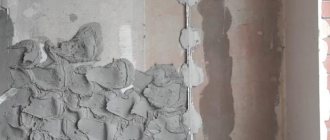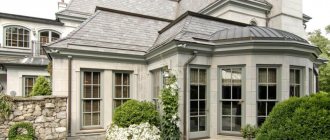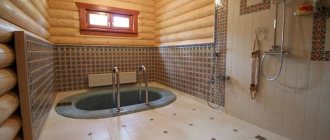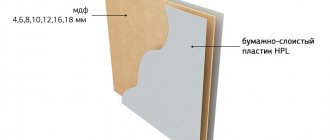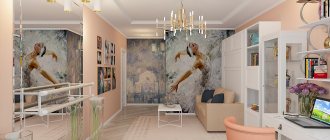Home » Decor » Wall decoration
DesignWall decoration
Veronica Bondar
21724 Views
Stone interior decoration is one of my favorite ways to transform an interior. This solution allows you to emphasize the individuality, taste and material wealth of the owners of a house or apartment, and also creates an unusually cozy atmosphere and an amazing indoor microclimate. A great tool for creating designs with character and strength. Everything will be discussed in more detail later in the article.
Types of natural stone for finishing and their advantages
Natural stone is quite capricious to work with, but at the same time this material has a unique texture and color, is durable and stable, environmentally friendly and especially luxurious.
It is difficult to imagine many interiors without such a stylistic solution.
There are several types of natural stone popular for interior decoration:
- marble is distinguished by its variety of colors, durability and high price;
- granite is easy to maintain and resistant to mechanical damage;
- travertine is resistant to moisture and is popular for decorating bathrooms;
- limestone is available in a wide variety of colors, is easy to work, quite inexpensive, but also very fragile;
- shell rock is characterized by the presence of a porous structure, is fragile, and requires additional coating with special materials;
- tuff has high thermal insulation properties, is easy to saw, and is not resistant to moisture.
To make the interior of a room with stone harmonious, it must be diluted with softer materials. This could be decorative plaster, wallpaper, painted walls, etc.
A large number of rough surfaces in a room can create an undesirable effect and make the atmosphere cold and uncomfortable.
What is better to replace
There is a great way to save money and create a stone-like surface - using decorative plaster. In appearance and similarity of installation, this option can be compared with natural stone. It allows you to create the surface of the desired relief.
Stone imitation that you can't tell apart
The advantages of this material are obvious: ease of installation, affordable price, wide variety of colors and textures. Suitable for decorating walls, floors, ceilings and even furniture. It creates a uniform, beautiful surface without seams or joints and is safe for human health.
Very convenient and practical
As a rule, to use decorative plaster you do not need to pre-level the walls. Another way is to use plastic panels with a stone effect, tiles, 3D wallpaper, etc.
The main thing is not to overdo it with finishing, so as not to look cluttered
VIDEO: Add stone to the interior
Artificial stone finishing
How best to update your interior using decorative stone
How to use in the interior
I want to share with you a few tips on using decorative stone for interior decoration:
- basic, unifying the entire style of an apartment or house, lining window and door openings. Here you can choose imitation brick, which fits perfectly into any style;
- An excellent backdrop for a large TV in the living room will be decorating part of the wall. If the room has a fireplace, then it can be lined with this material. This is a win-win option that carries a powerful stylistic load;
- Flemish brick imitation is suitable for decorating any room, allowing you to create a special atmosphere in the room;
- material with a rocky surface goes well with various pieces of decoration, plaster, wallpaper and painted walls;
- The kitchen apron can be lined with stone, creating a continuous space and a very stylish interior. In this case, it must be varnished to facilitate daily cleaning and emphasize the structure of the selected material.
The best modern materials for imitation brick
| Photo | Name | Rating | Price | |
| #1 | Gypsum | ⭐ 4.9 / 5 16 — votes | Find out more | |
| #2 | Clinker | ⭐ 4.85 / 5 4 - votes | Find out more | |
| #3 | Porcelain tiles | ⭐ 4.8 / 5 6 — votes | Find out more | |
| #4 | Acrylic | ⭐ 4.8 / 5 3 - votes | Find out more | |
| #5 | Flexible stone | ⭐ 4.75 / 5 5 — votes | Find out more |
What modern materials would you choose to imitate brick or would you recommend purchasing?
Take the survey
Advantages and disadvantages of finishing stone walls inside an apartment
Finishing with decorative stone in an apartment has its pros and cons. The positive aspects include:
- resistance to mechanical stress;
- combination of price and quality;
- the ability to complete the work independently in a short period of time;
- the absence of harmful additives and reagents in the composition of artificial stone and the environmental safety of natural stones;
- resistance to humidity and water ingress.
Among the shortcomings the following points stand out:
- the material is more expensive than conventional wallpaper;
- heavy weight and complex installation of a natural product;
- the need for treatment with disinfectants;
- Some varieties are poorly susceptible to restoration.
Types of natural stone for finishing walls inside an apartment
Natural finishing material is used infrequently - it has a high price. But it also has its advantages: long service life, reliability, resistance to mechanical stress.
In addition, it retains heat well inside the apartment.
Marble
Strength and durability are two main characteristics of marble. There are many colors that are easy to match any design. It is resistant to temperature changes and tolerates moisture well. The stone can be polished, giving a beautiful appearance and shine.
The work process has its own nuances: heat treatment, grinding, polishing.
Slate
One of the most successful options for finishing work is an environmentally friendly and reliable material. You can choose different colors: green, black, red, gray tones. The use of such a stone is a sign of good taste among apartment owners.
A room decorated with slate looks elegant and unusual.
Wild
Wild stone is often used in the interior of an apartment. This is a unique material - the color and texture are not repeated, so the room looks unusual. It is used for finishing fireplaces, walls, columns.
Important! It is better to use the stone in doses, since your bedroom can turn into a primeval cave - it is characterized by natural roughness.
Granite
A good solution for any room - granite is moisture resistant, withstands sudden temperature changes, does not become dirty and does not wear off over time. There is a minus: background radiation, which is increased. To use it on a wall, it must be reinforced.
Granite is able to change colors when lighting changes; the edges shimmer in the sun.
Photo
Stonington ResidenceRead: What types of siding are there?
Let's discuss this article together:
Click to cancel reply.
Types of artificial stone for decorating walls inside an apartment
This type of stone creates the appearance of natural stone, which is why designers often use it. It is cheaper and easier to mount on the surface.
Concrete
This is a budget-friendly and simple finishing method that can be easily done with your own hands. The weight is light, which allows you to quickly finish the job. It can be made using sand, strength additives, dyes, and plasticizers.
This is a universal option that can be easily mounted on any surface.
Advice! Additives or plasticizers must be used - they increase structural strength and quality characteristics.
Acrylic
Decorating with acrylic stone has its advantages:
- light weight;
- no toxins;
- ease of installation - can be glued with special compounds;
- is not exposed to moisture, temperature, or mechanical damage.
This is a great option for any room.
Ceramic
This stone consists of red clay and granite chips, which are mixed and pressed under high temperatures. Thus, the finishing surface becomes shiny and glossy. This is a minus - the product can be easily scratched, it is practically not subject to restoration.
Disadvantages include heavy weight and difficulty of installation.
Most often it is used to decorate the walls of a building from the outside, rarely from the inside. Second option: stone-look ceramic tiles. This is a common material that can be purchased at any hardware store.
Plaster
It is made in this way: a liquid gypsum solution is poured into shaped molds and removed after complete drying. It is easy to work with and cut, its weight is almost 2 times less compared to concrete. Beautiful appearance and low cost are two factors for which gypsum stone has become a leader in the construction market.
Gypsum stone for interior decoration of an apartment is an excellent solution if it needs to be mounted on a plasterboard wall.
Quartz
This material is considered half artificial - the finished product contains almost 90% natural mineral. An ethereal synthetic resin acts as a binding base. Due to its excellent performance characteristics, quartz is used in the manufacture of countertops and sanitary ware.
Its cost is higher than that of acrylic analogues.
Necessary tools for DIY masonry
For DIY installation you will need many tools:
- spatulas - regular and serrated;
- metal tape measure;
- building level;
- rubber hammer;
- square;
- syringe gun;
- mixer for preparing glue;
- grinder with a disc for stone;
- brush or roller;
- brush with iron teeth;
- wooden block, beacons;
- containers for grout, glue;
- brush for smoothing seams,
- sprayer for water repellent,
- adhesive mixture.
Features of interior design with decorative tiles
Decorating interiors with decorative stone is a frequently used technique among designers. The materials have a number of advantages:
- aesthetic appeal;
- wide range of textures and colors;
- versatility, suitable for decorating different rooms;
- durability;
- ease of care;
- low cost.
Decorative stone in the interior is a stylish, practical, reliable decor.
Features of living room decoration
The texture of natural stone creates comfort zones and brings the aura of the presence of a natural landscape into the interior. A designer's work with stone requires a balanced approach to the selection of textures and the amount of decor used.
Decorative stone in the interior of the living room is used:
- for decorating individual walls;
- highlighting transition zones in studio rooms;
- as accents for individual structural elements (shelves, niches);
- room zoning;
- flooring;
- for the fireplace and the area around it;
- as a frame for decorative panels and frescoes.
Most often, the central wall in the living room is highlighted with a decorative stone slab. Such a design solution not only serves as a method of aesthetic design, but also visually transforms the space.
Focus attention on the main element in the room where audio and video equipment and the fireplace area are located.
If the room has niches or plasterboard structures, then highlighting the texture of the stone will make them more expressive due to the aesthetic appeal and volume of the texture. Illumination will add additional color to such details.
Using stone decors with different textures is a good way to zoning a room.
For example, the flooring of the kitchen and dining area is laid with porcelain tiles of different shades. On the walls, the border part of the room is highlighted with a sandstone texture. Duplicate it on the central wall in the living room.
It is traditionally believed that the textures of marble, granite, and aventurine are more suitable for interiors in a classical style. But this is not entirely true. Glossy and matte smooth porcelain stoneware is an excellent decor in a minimalist interpretation of the living room.
A wall decorated with a marble slab will add a touch of stylish elegance to the interior.
Organic styles, country, Provence and others are primarily a combination of stone decor and wood.
Decorating the fireplace area with decorative stone is not only an aesthetic technique, but also a practical one. The slabs can withstand high temperatures, are easily cleaned of soot and deposits, and are not afraid of mechanical stress. The fireplace in the living room is one of the main compositional elements.
Flame, hearth and stone are the optimal solution for installing a fireplace area.
An artistic panel or fresco framed by decorative stones makes up a single ensemble. The decor is like a natural continuation of the natural landscape in the image.
Regulatory styles
First of all, these include styles designed in the traditions of minimalism. Laconism, the use of strict geometric shapes, the absence of excessive decoration, simplicity of lines are the aesthetic principles of stylistics. Decorative stone in a minimalist interior looks more expressive. The absence of unnecessary details creates additional space for visual emphasis on the texture of the material.
Glossy stone tiles in the living room interior Source rumble.com
The slabs are used to highlight zones, as a fireplace finish. Individual structural elements, open plasterboard shelves, and partitions are emphasized.
Sandstone textures are mainly used; yellowish shades soften the “severity” of minimalism. The grayish-white tones of slate and shungite look good in the interior and harmonize with the overall style.
Smooth lappatted (non-slip) porcelain stoneware is suitable as a floor covering.
Room with a fireplace in a loft style Source pt.aviarydecor.com
The urban style of techno and hi-tech limits the use of decor; mainly modern composite materials are used. But inclusions of stone decor with textures of brick and savage stone naturally fit into techno and hi-tech styles.
Loft - eclectic (mixed) style. Originated in the first half of the 19th century. The bohemian intelligentsia of America reclaimed the premises of former factories, warehouses and attics as living quarters. Spacious rooms with brickwork, rubble and cobblestone textures are part of the natural ambiance of the loft, so stone decor is organic in this style.
Interior of a house in loft style Source mydesign-review.blogspot.com Living room with a decorative wall Source megastroyclub.ru
Homemade or organic styles
This stylistic direction is united by the desire to create an atmosphere of comfort. The functional content of the room plays an important role. Smooth contours, warm and pastel shades are needed to create an atmosphere of home comfort. The texture of natural stone naturally complements this interpretation.
These styles include Provence, grunge, country, chalet, shabby chic. The textures of natural stone in the form of lamellar slate, cobblestone, and sandstone are mainly used. Stone decor along with natural wood dominates the interior.
Beautiful veranda Source www.pinterest.ru
Beautiful big house Source www.dizain-moego-doma.ru
Stone decor in the interior of the hallway
The hallway is a functional unit in an apartment or house. From it there are passages to other rooms, and at the same time it serves as a place for storing outerwear. The layout of the room is subordinated to functionality.
It is quite common to find long or rectangular small rooms with several doors.
The main goal of the hallway design is to transform the space of the room and visually expand it. The specialist is faced with the task of turning the hallway into part of the overall stylistic ensemble of the entire house or apartment.
Decorative stone in the hallway performs a double function, aesthetic and practical. On the one hand, this is a design decoration technique, on the other hand, stone tiles are a reliable protective coating that is easy to care for.
Design solutions for decorating the hallway:
Transformation of space with the help of mirrors and a three-dimensional stone slab. This solution is suitable for narrow, long rooms. For example, a wardrobe with mirrored doors is placed opposite a wall with stone decor.
Stone tile decor in combination with wall frescoes, photo wallpaper or perspective images visually expands the room. To enhance the effect, you can hang a mirror on the opposite side.
A combined option is most often used for hallway lighting. For example, a stained glass window or a chandelier is in the main part of the hallway. Wall sconces are installed in the corridor leading to other rooms. Thanks to the voluminous texture and color palette of the stone decor, a visual transformation of the wall of a narrow passage room occurs.
To make the hallway aesthetically attractive, small niches and false columns are made on the wall. Decorative tiles and lighting will give them expressiveness.
Doorways are framed with stone decor for greater expressiveness.
Non-standard use
For those who believe that decorating a wall using decorative stone is too simple a solution, there are more daring proposals:
Decorating the ceiling This method allows you to achieve the effect of antiquity. Due to the right combination with interior items and decorative elements, you can create the feeling of a medieval castle or a rich old mansion. In this case, spot lighting looks advantageous;
Create the feeling of a medieval castle
Stone door An excellent option for disguising the door to an office or any other room. For this, decorative tiles with an appropriate pattern are used;
Concealed door
Niche made of textured material. An excellent solution for bedrooms, it creates the feeling that a person falls asleep in the most natural conditions. I love stone niches in living rooms, dining rooms and dens;
Decorating a stone niche for a bedroom - comfort and coziness are guaranteed
Winter garden You can't think of a better combination than flowers, stone and trees. Due to its technical properties, this material is excellent for interior decoration of a winter garden;
Winter Garden
Mirror framing This option will fit into any interior. The framing effect can also be used when working with aquariums, windows, paintings and various openings;
Combinations of stone and mirror
Creating decorative panels on the walls With the help of decorative stone, you can show your imagination and get extraordinary designs that will become an exceptional addition to your interior.
The panel on the wall made of stones looks beautiful
Stone in the interior of a balcony and loggia
The stone decor fits organically into the design of the balcony loggia. From a practical point of view, it is suitable for small areas. The walls do not get dirty and are easy to clean.
The slabs are not susceptible to changes in humidity.
To visually expand and transform the space, the same techniques are used as for hallways.
Relaxation areas and a mini-office are equipped on the loggias. If the area allows, you can make a dining area. In the case where a balcony or loggia is combined with a children's room, it is advisable to equip there a play area and a place for activities. The decor allows you to beautifully decorate a small space.
The panoramic view that opens from the loggia goes perfectly with the texture of the stonework.
Frequently used design solutions:
- framing an opening, passage;
- “torn” masonry;
- decor of one of the walls;
- decoration of structural elements with decorative stone.
A small room decorated with decorative stone with different textures, for example, brick and cobblestone, looks interesting.
Stone tiles in the nursery
Decorative stone in a nursery can become not only decoration, but also have a practical purpose. It is easily cleaned from contamination and is not afraid of rough mechanical impact. Stone tiles are laid on active impact zones: play areas, places for educational activities, sports areas.
For children's rooms, decorative slabs painted in bright, “cheerful” colors are used.
Teenagers gravitate towards urban, techno-style. These trends of minimalism attract textures such as brick.
National and ecological styles
Ethnic styles are very diverse, but several trends should be highlighted that attract natural stone.
The Scandinavian style was formed in harsh landscapes, rocky mountains and hills. Therefore, stone is a natural part of home design. Against the background of light walls, stone tiles look expressive. Use natural decorative textures in gray and yellow tones. Stone is present not only as decoration on walls and floor coverings - countertops are often made from it.
Japanese interior of a bright hall with decorative stone Source dd-restaurant.ru
A characteristic feature of Japanese minimalism is the desire to use natural materials and textures. Wood predominates in the interior; natural stone is used as a companion.
Stone in the bedroom
The techniques for using stone decor in the bedroom are similar to those used in the living room. The difference is that the wall at the head of the bed or opposite it is used as a focal point. The frame of the bed can be highlighted by columns, an arched opening, or a niche in a frame of decorative stones.
Additional lighting with a switch near the bed will decorate the design and make it functional.
In the case where the bedroom is connected to a loggia, the stonework can be repeated on the balcony.
The type of decorative stone and color palette are selected according to the style, size of the room, and design concept.
Decorative stone-look tiles in the bathroom
The use of decorative stone in the bathroom has become popular recently. This is partly due to the popularization of eco-style. Designers are actively using the newfangled trend.
A bathroom lined with decorative stone looks natural.
In such an interior it is pleasant to take water treatments. A bathroom lined with marble and granite slabs acquires additional charm. Such design solutions are suitable for open showers with a drain instead of a tray. Free-standing bathrooms look impressive in an interior with a natural stone texture.
Decorative stone-effect tiles in the kitchen
Stone tiles with natural textures are used to decorate the apron of the work area, and porcelain stoneware is used as a floor covering. You can highlight the work and dining areas in different colors.
They are used as decoration on walls, including in combination with photo wallpapers and artistic panels.
How long should decorative finishing dry?
For those interested in the technology of how to lay artificial stone on a wall, it became clear that this is a multi-stage process. Each stage requires a pause to allow the base and adhesive composition to dry.
Adhesive solutions are applied to the wall after drying from cleaning (2-3 hours at room temperature). It is important to let the primer dry completely; the polymerization rates are indicated in the instructions. The drying time of the external cladding depends on weather factors. After installation of the stone decor is completed, it is left for 24 hours. The adhesive must cure before filling the joints.
After installation of the stone decor is completed, it is left for 24 hours.
If the facade is tiled, but it suddenly starts to rain, between the slabs there will be a favorable environment for living organisms. It is better to cover the cladding with film and then let it dry well for 1-2 days. After the glue has completely hardened, you can putty the seams. In an apartment, all processes go a little faster.
How to choose a facing stone
When choosing between natural and artificial stone, I would like to say a few words in defense of the latter, whose reputation is hampered by the presence of the word “artificial” in the name.
Meanwhile, artificial stone:
- Cheaper than natural.
- It is lighter in weight, much easier to install and, if necessary, replace.
- Does not crack due to temperature changes and does not fade in the sun.
- Easier and easier to maintain.
In addition, it is impossible to overestimate the wide variability of artificial stone: a huge range of models, textures, shapes, sizes and color shades will allow you to ideally realize any designer’s ideas, and thanks to the standardization of sizes, it is easy to accurately calculate the masonry and, if necessary, replace damaged elements.
With natural stone everything is much more complicated.
The main quality of a facing stone is the design of its front part. Depending on the tasks that need to be solved when creating an interior, decorative stone is usually divided into:
- brick (reproduction of different types of brickwork);
- crushed - to imitate untreated or roughly processed stone quartz, marble, granite, limestone;
- sawn - with clear edges and an unpolished surface of a sawn block of sandstone or limestone;
- rubble (imitation of natural boulders and pebbles); decorative tiles (imitation of polished marble and granite);
- fantasy (non-standard) type - stones that do not exist in nature with a complex texture and color scheme;
- mosaic elements for creating mosaic compositions of varying complexity.
The building materials market today offers an incredible number of offers from different manufacturers.
The technology for producing artificial facing stone guarantees its high performance qualities and external similarity to natural analogues - sometimes it is difficult to detect a “fake” even for a specialist, not to mention the ordinary eye.
Rules for laying decorative stone
Recommendations for laying decorative stone apply both to the appearance and to the attachment of facing tiles to surfaces. The first type of recommendations is more the responsibility of the interior designer, his diligence and competence.
When renovating your home yourself, you will have to rely on your own taste, views on comfort and creativity.
We can only advise you not to get carried away with mixing different types of stone within one room, being satisfied with a maximum of two “breeds” of stones; it is better to use different (naturally, compatible) shades of the same material.
For direct laying of decorative stone tiles, it is extremely important that the surface is smooth, strong and clean, with good adhesion for durable bonding of the stone. All remnants of mortar, putty, as well as greasy stains, weak plaster and even dust must be removed.
We advise you to take this recommendation very carefully!
Preliminary laying of decorative stone on a flat surface will allow you to identify in advance possible differences in tiles from different batches, optimally select the relative position of individual stones and see the future masonry with your own eyes. Only a few specialists risk doing stone cladding without preliminary laying.
Good advice: a few days before tiling, it would be good to check the effect of the purchased adhesive solution and its compatibility with the stone used and the surface to be covered. Lay several tiles and then carefully dismantle them after 2-3 days, while assessing the reliability of their attachment to the wall.
If the stone is held firmly, you can begin facing.
Depending on the presence of joint joints in the future masonry, there are upper and lower methods of laying stone. So, if the presence of jointing is not expected, laying facing stone tiles begins from the bottom edge, with jointing (for example, to style a wall as brickwork) - from the top.
This is a general and basic rule: there is also a certain dependence on the type of stone, but it is better to consult a specialist on this issue.
Preparation for finishing
First you need to calculate the amount of material. If the stone will cover the entire area of the walls in the hallway, you should subtract the area of the openings and add 10%. If the decor will be located around openings, niches, in separate fragments on open walls, draw a rough sketch of the decoration and take measurements of each area. Then add up the area and add 10-15% for trimming. When purchasing material, you should remember that the amount of stone with an angular shape is calculated in linear meters, and of a regular shape - in square meters.
Artificial stone in the hallway
Additionally you will need:
- hacksaw or grinder (depending on the type of stone);
Bulgarian - simple spatula 7-9 cm;
Putty knife - notched spatula 15-17 cm;
Notched trowel - level;
Professional cast Kapro level - long ruler;
- pencil;
- paint brushes;
- varnish;
- file;
- acrylic primer. Acrylic primer for walls
Artificial stone can be attached using liquid nails, cement-based or gypsum-based glue. The glue consumption must be indicated on the packaging, so when purchasing, you should know exactly the finishing area and take it with a small margin.
Liquid Nails
Types of liquid nails
If you use gypsum stone, you will need a special miter box with high sides for cutting.
Plastic miter box
When everything you need has been purchased, you should start preparing the surface.
Step 1. Dismantling the coating
Removing the coating
If the stone covers the hallway walls completely, the old coating is removed completely to the base. If separate areas are intended for decoration, the coating must be dismantled very carefully. On the wallpaper, mark the boundaries of the finish with a pencil and carefully trim it with a utility knife, leaving a margin of 1-2 cm wide for stones. The wallpaper glue is soaked in water and removed with a spatula, and the walls are thoroughly washed. They also remove the paint if it is peeling or cracked, and clean off any loose plaster.
Step 2. Leveling the walls
Putty
Laying the stone should be done on a flat, smooth surface - this will facilitate the work process and increase the strength of the decorative coating. Therefore, all small cracks, gaps, and depressions are filled with putty, and if there are differences of more than 5 mm, it is better to plaster the entire area. Particular attention should be paid to doorways: deep cracks may form around the perimeter of the frame, for sealing which it is recommended to use a cement solution.
Prices for mixtures for leveling walls and ceilings
Mixtures for leveling walls and ceilings
Step 3: Priming
Priming
Dry walls must be lightly sanded to smooth out the unevenness of the puttied areas, and then wiped with a rag to remove dust. After this, the surface is treated 1-2 times with an acrylic primer. If there is wallpaper around the perimeter of the areas to be treated, the primer should be applied so as to cover an edge 1 cm wide - what will be hidden under the cladding.
